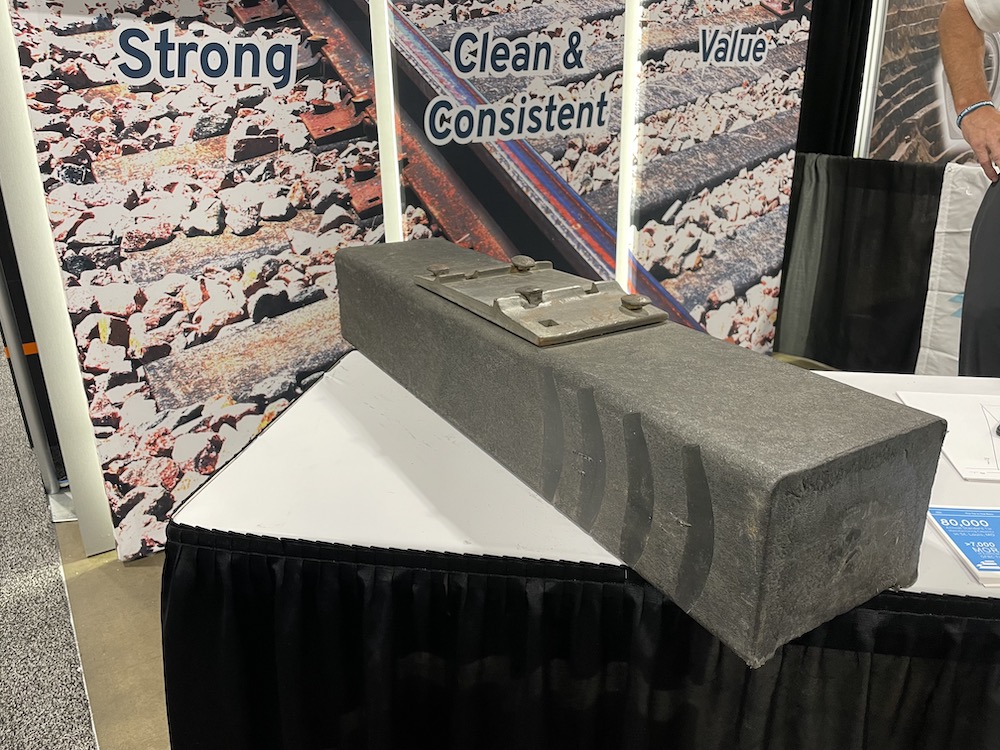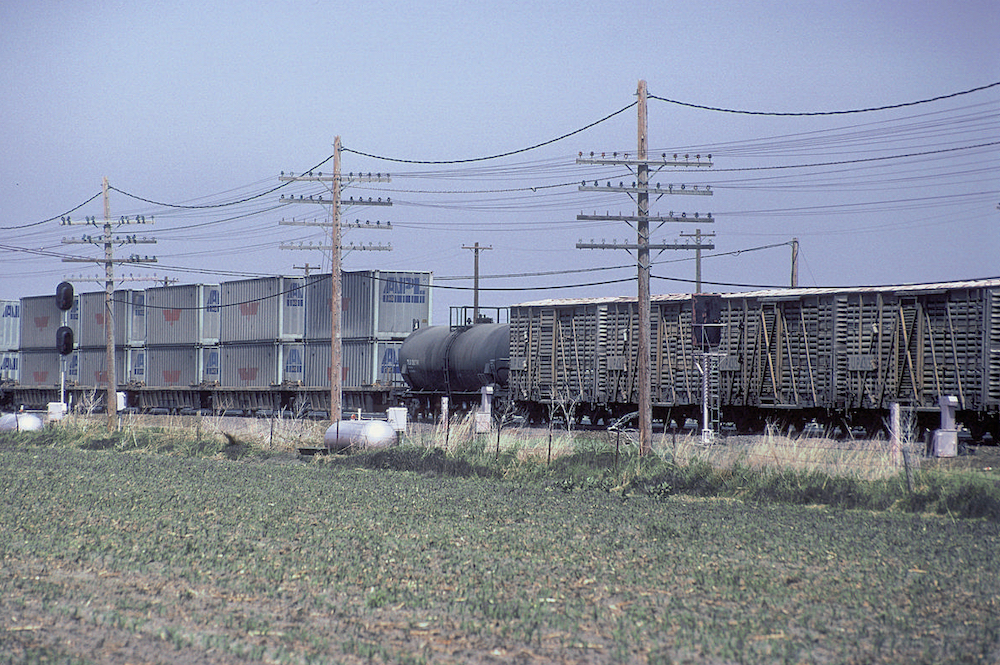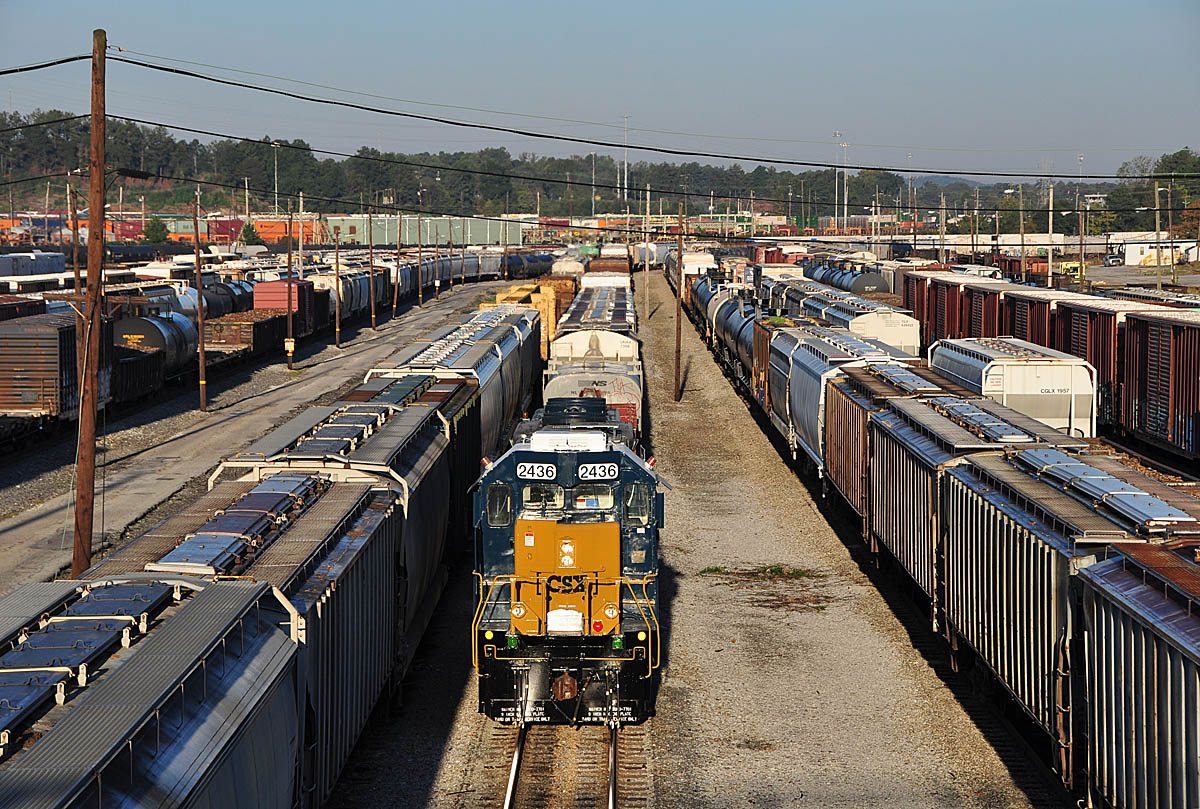Composite ties
Wood crossties have been part of railroading from the beginning and North American railroads still purchase and install 25 million new wood ties in a typical year. Although concrete ties, which appeared in the 1970s, are increasingly common wood supports 95% of North America’s track. But hovering around the fringes is a third option, composite ties. Which raises the question: What are composite ties?
An engineered polymer composite tie is generally made from recycled materials such as plastic or rubber. They are something of a work in progress with past attempts at making composite ties meeting with mixed results, but manufacturers say the latest generation of ties is shaping up to be both durable and environmentally friendly — two selling points that have caught the attention of major railroads.
The Railroad Tie Association, which advocates for the use of wood crossties, estimates a 35-year service life for treated wood ties although industry sources say there is some variability in actual results. While a quality treated hardwood tie installed in a favorable climate can last a very long time, a wood tie installed in a warm, moist climate may need to be replaced in a decade.
Composite ties are naturally impervious to insect and moisture damage, resist cracking and splitting, and can be handled with existing maintenance-of-way equipment. They use standard tie plates and either spikes or track screws. Moreover, the environmental benefits could be significant if composites move into common use.
One manufacturer, TieTek Global of Houston, Texas, says 3,300 of its ties, enough for one mile of track, removes 2 million plastic bottles, 9 million plastic bags, and 10,000 scrap vehicle tires from the waste stream. Moreover, TieTek expects a lifespan of 50 years and, when its ties do eventually need to be replaced, TieTek says they can be recycled and made into new ties.
A competitor, St. Louis-based Evertrak, makes its composite tie from recycled polyolefin plastic reinforced with glass fiber. It’s website notes, “While we’ve advanced from paper to aluminum to carbon fiber to make airplanes, we still make railroad ties by chopping down trees. The only innovation in 150 years is treating ties with poisonous creosote.”
Composite ties are more expensive than wood but, Evertrak says, the cost spread over the long life of the product is favorable, especially in areas with medium- to high-rates of wood tie replacement. Furthermore, avoiding the traffic disruption inherent in frequent tie replacement is a significant benefit on a busy railroad.
Shaun Morgan, senior engineer, rail fixation systems with voestalpine Railway Systems Nortrak, said Class 1 railroads are watching developments in composite ties with considerable interest.
“As soon as someone makes a composite tie that works,” he said, “it’ll take the industry by storm.”















Carbon fiber could be used to replace a lot of things currently made out of other materials…and if there’s enough volume it could also cause industries to start collecting fossil fuel exhaust for the specific purpose of capturing all the known components to be reused in other products(why not capture and separate out the carbon, hydrogen, nitrogen, etc., etc.,…expensive, yes, but imagine the possibilities).